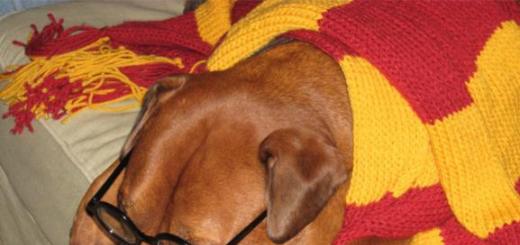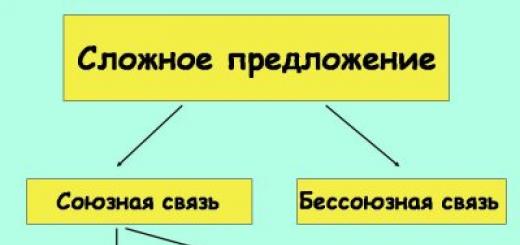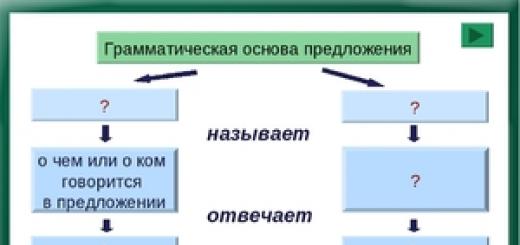Covalent bond - the most common type of chemical bond that occurs due to the socialization of an electron pair through an exchange mechanism, when each of the interacting atoms supplies one electron, or by a donor-acceptor mechanism, if an electron pair is transferred to the common use of one atom (donor) to another atom (acceptor) (Fig. 3.2).
A classic example of a non-polar covalent bond (the difference in electronegativity is zero) is observed in homonuclear molecules: H–H, F–F. The energy of a two-electron two-center bond lies in the range of 200–2000 kJ∙mol–1.
When a heteroatomic covalent bond is formed, the electron pair is shifted to a more electronegative atom, which makes such a bond polar. (HCl, H2O). The ionicity of the polar bond in percent is calculated by the empirical relation 16(χ A - χ B) + 3.5(χ A - χ B) 2, where χ A and χ B are the electronegativity of atoms A and B of the AB molecule. In addition to polarizability, a covalent bond has the property of saturation - the ability of an atom to form as many covalent bonds as it has energetically available atomic orbitals. The third property of a covalent bond - directionality - is discussed below (see the method of valence bonds).
An ionic bond is a special case of a covalent bond, when the resulting electron pair belongs entirely to a more electronegative atom that becomes an anion. The basis for separating this bond into a separate type is the fact that compounds with such a bond can be described in the electrostatic approximation, considering the ionic bond due to the attraction of positive and negative ions. The interaction of ions of the opposite sign does not depend on the direction, and the Coulomb forces do not have the property of saturation. Therefore, each ion in an ionic compound attracts such a number of ions of the opposite sign that an ionic-type crystal lattice is formed. There are no molecules in an ionic crystal. Each ion is surrounded by a certain number of ions of a different sign (coordination number of the ion). Ion pairs can exist in the gaseous state as polar molecules. In the gaseous state, NaCl has a dipole moment of ~3∙10 –29 C∙m, which corresponds to a shift of 0.8 electron charge per bond length of 0.236 nm from Na to Cl, i.e. Na 0.8 + Cl 0.8–.
The metallic bond arises as a result of partial delocalization of valence electrons, which move quite freely in the metal lattice, electrostatically interacting with positively charged ions. Bonding forces are not localized and not directed, and delocalized electrons cause high thermal and electrical conductivity.
Hydrogen bond. Its formation is due to the fact that as a result of a strong displacement of an electron pair to an electronegative atom, a hydrogen atom with an effective positive charge can interact with another electronegative atom (F, O, N, less often Cl, Br, S). The energy of such an electrostatic interaction is 20–100 kJ∙mol–1. Hydrogen bonds can be intra- and intermolecular. An intramolecular hydrogen bond is formed, for example, in acetylacetone and is accompanied by cycle closure (Fig. 3.3).
Molecules of carboxylic acids in non-polar solvents dimerize due to two intermolecular hydrogen bonds (Fig. 3.4).
The hydrogen bond plays an exceptionally important role in biological macromolecules, such inorganic compounds as H 2O, H 2F 2, NH 3. Due to hydrogen bonds, water is characterized by such high melting and boiling points compared to H 2E (E \u003d S, Se, Te) . If there were no hydrogen bonds, then water would melt at –100°C and boil at –80°C.
Van der Waals (intermolecular) bond is the most universal type of intermolecular bond, due to dispersion forces (induced dipole - induced dipole), induction interaction (permanent dipole - induced dipole) and orientational interaction (permanent dipole - permanent dipole). The energy of the van der Waals bond is less than the hydrogen bond and is 2–20 kJ∙mol–1.
Chemical bond in solids. The properties of solids are determined by the nature of the particles occupying the nodes of the crystal lattice and the type of interaction between them.
Solid argon and methane form atomic and molecular crystals, respectively. Since the forces between atoms and molecules in these lattices are of the weak van der Waals type, such substances melt at fairly low temperatures. Most of the substances that are liquid and gaseous at room temperature form molecular crystals at low temperatures.
The melting points of ionic crystals are higher than those of atomic and molecular crystals because the electrostatic forces acting between the ions far exceed the weak van der Waals forces. Ionic compounds are harder and more brittle. Such crystals are formed by elements with very different electronegativity (for example, alkali metal halides). Ionic crystals containing polyatomic ions have lower melting points; so for NaCl t pl. = 801 °C, and for NaNO 3 t pl = 311 °C.
In covalent crystals, the lattice is built of atoms connected by a covalent bond, so these crystals have high hardness, melting point and low thermal and electrical conductivity.
Crystal lattices formed by metals are called metallic. The nodes of such lattices contain positive metal ions, and the interstitials contain valence electrons (electron gas).
Among metals, d-elements have the highest melting point, which is explained by the presence in the crystals of these elements of a covalent bond formed by unpaired d-electrons, in addition to the metallic bond formed by s-electrons.
Types of chemical wigeons.
Part A
1) Li+ and I - 2) Br- and H + 3) H+ and B 3+ 4) S 2- and O 2-
1) ionic 2) metallic 3) covalent non-polar 4) covalent polar
1) ionic 2) metallic 3) covalent non-polar 4) covalent polar
1) ionic 2) metallic 3) covalent non-polar 4) covalent polar
1) NaCl, KOH 2) HI, H 2 O3)CO 2 , Br 2 4)CH 4 , F 2
1)1 2)2 3)3 4)4
1) KCl 2) CO 3) H 2 O 4) HCl
Part B.
A) iron 1) ionic
D) nitrogen
Part C
Types of chemical wigeons.
Part A
1. Chemical bond in the hydrogen fluoride molecule
1) ionic 2) metallic 3) covalent non-polar 4) covalent polar
2. ionic bond is formed between atoms
1) sodium and fluorine 2) sulfur and hydrogen 3) sulfur and oxygen 4) chlorine and hydrogen
3. An ionic bond is formed between ions
1) Li+ and I - 2) Br- and H + 3) H+ and B 3+ 4) S 2- and O 2-
4. Chemical bond between atoms of chemical elements with serial numbers 3 and 35
1) ionic 2) metallic 3) covalent non-polar 4) covalent polar
5. A chemical bond between atoms whose electronegativity does not differ from each other is called
1) ionic 2) metallic 3) covalent non-polar 4) covalent polar
6. Chemical bonding of an atom of a chemical element with six electrons on the outer electron layer with hydrogen
1) ionic 2) metallic 3) covalent non-polar 4) covalent polar
7. Covalent polar bond in each of the two substances:
1) NaCl, KOH 2) HI, H 2 O3)CO 2 , Br 2 4)CH 4 , F 2
8. There are two common electron pairs in a molecule
1) hydrogen 2) hydrogen bromide 3) hydrogen sulfide 4) ammonia
9. One covalent bond has a molecule
1) hydrogen iodine 2) nitrogen 3) methane 4) oxygen
10. Number of common electron pairs in compounds of EO composition 2
1)1 2)2 3)3 4)4
11. Specify the formula of the extra compound
1) KCl 2) CO 3) H 2 O 4) HCl
Part B.
12. Establish a correspondence between the name of the compound and the type of chemical bond in this compound.
Name of compound Type of chemical bond
A) iron 1) ionic
B) oxygen 2) covalent polar
B) water 3) covalent non-polar
D) lithium bromide 4) metal
D) nitrogen
13. A covalent polar bond takes place in compounds:
1) hydrogen sulfide 2) carbon monoxide 3) fluorine 4) zinc 5) potassium fluoride 3) fluorine
14. Three covalent polar bonds have molecules
1) nitrogen 2) phosphine 3) carbon dioxide 4) ammonia 5) methane
Part C
15. Give examples of four potassium compounds that have both ionic and covalent bonds at the same time.
16. Name a compound that has one covalent non-polar bond of atoms, the electrons of which are located on three energy layers.
 1. The connection between metal ions and wandering electrons is called: IONIC COVALENT NON-POLE METAL COVALENT POLAR
1. The connection between metal ions and wandering electrons is called: IONIC COVALENT NON-POLE METAL COVALENT POLAR
 2. The chemical bond that occurs between atoms of non-metals of the same type is called: IONIC COVALENT NON-POLAR METAL COVALENT POLAR
2. The chemical bond that occurs between atoms of non-metals of the same type is called: IONIC COVALENT NON-POLAR METAL COVALENT POLAR
 3. The chemical bond that occurs between atoms of non-metals with different electronegativity is called IONIC COVALENT NON-POLAR METALLIC COVALENT POLAR
3. The chemical bond that occurs between atoms of non-metals with different electronegativity is called IONIC COVALENT NON-POLAR METALLIC COVALENT POLAR
 4. The chemical bond that occurs between the atoms of a typical metal and a typical non-metal is called: IONIC COVALENT NON-POLAR METALLIC COVALENT POLAR
4. The chemical bond that occurs between the atoms of a typical metal and a typical non-metal is called: IONIC COVALENT NON-POLAR METALLIC COVALENT POLAR
 5. Select a group of substances, which includes only substances with a covalent non-polar bond: N 2, NH 3, CO 2, NH 3, H 2, KF H 2 O, Na. Cl N 2, H 2, F 2, C Na, H 2, HF, Ca. CO3
5. Select a group of substances, which includes only substances with a covalent non-polar bond: N 2, NH 3, CO 2, NH 3, H 2, KF H 2 O, Na. Cl N 2, H 2, F 2, C Na, H 2, HF, Ca. CO3
 6. Select a group of substances that includes only substances with a covalent polar bond: N 2, NH 3, CO 2, Na, NH 3, H 2, KF H 2 O, HCl F 2, HF, C Ca. CO3
6. Select a group of substances that includes only substances with a covalent polar bond: N 2, NH 3, CO 2, Na, NH 3, H 2, KF H 2 O, HCl F 2, HF, C Ca. CO3
 7. Select a group of substances that includes only substances with a metallic bond: Na, CO 2, K, Al, NH 3, Fe H 2 O, Na. Cl N 2, H 2, F 2, C Na, H 2, HF, Ca. CO3
7. Select a group of substances that includes only substances with a metallic bond: Na, CO 2, K, Al, NH 3, Fe H 2 O, Na. Cl N 2, H 2, F 2, C Na, H 2, HF, Ca. CO3
 8. Select a group of substances, which includes only substances with an ionic bond: Na, K, Al, Fe CO 2, Na. Cl, NH 3, H 2, H 2 O, HCl F 2, C KF, Mg. I 2, Ca. Cl2
8. Select a group of substances, which includes only substances with an ionic bond: Na, K, Al, Fe CO 2, Na. Cl, NH 3, H 2, H 2 O, HCl F 2, C KF, Mg. I 2, Ca. Cl2
 9. Determine the type of chemical bond and the type of crystal lattice, if the substance has a high melting and boiling point, solid, refractory, highly soluble in water. The solution conducts electricity. Covalent polar bond and atomic crystal lattice Ionic bond and ionic crystal lattice Covalent polar bond and molecular crystal lattice. Metal bond and metal crystal lattice. Covalent non-polar bond and molecular crystal lattice
9. Determine the type of chemical bond and the type of crystal lattice, if the substance has a high melting and boiling point, solid, refractory, highly soluble in water. The solution conducts electricity. Covalent polar bond and atomic crystal lattice Ionic bond and ionic crystal lattice Covalent polar bond and molecular crystal lattice. Metal bond and metal crystal lattice. Covalent non-polar bond and molecular crystal lattice

Lesson progress: (Slide 3)
- Explanation of the topic “Basic types of chemical bonds”.
- Fixing (Test)
- Work in the graphic editor "Paint" - drawing up graphic formulas of substances.
- Homework.
During the classes
I. Chemical dictation.(Slide 4)
II. Checking homework
(Slide 5)(oral questioning)
- What is electronegativity?
- The dependence of electronegativity on the location of the element in the periodic table?
- How to determine whether an element belongs to metals or non-metals by electronegativity?
III. Explanation of the topic “Basic types of chemical bonds”. (
slide 6)- The bond between elements with the same or similar electronegativity is called covalent. (Slide 7)
- The bond between metals is called metallic.
- The bond between elements with significantly different electronegativity is called ionic.
- The bond between electronegative elements of different molecules with the help of hydrogen is called hydrogen .
IV. Fixing (Test)
(Slide 19)“Reinforcement 3” - for those who are not entirely sure of their knowledge,
"Reinforcement 4" - for those who are confident in their knowledge,
“Reinforcement 5” is for those who are absolutely confident in their knowledge.
- Answer questions.
- You receive an assessment and wait until the teacher allows you to close the program.
V. Work in the graphic editor "Paint" - drawing up graphic formulas of substances.
(Slide 9)1. Open the program "Paint".
2. With the help of "tool kits" make graphic formulas of substances: water, sodium fluoride, hydrogen chloride, methane.
H 2 O, NaF, HCl, CH 4.
Test "Types of bonds and crystal lattices"
Option number 1
A1 In the carbon disulfide CS2 molecule, a chemical bond
1) ionic 2) metallic 3) covalent polar 4) covalent non-polar
A2 The atomic crystal lattice has
1) CH4 2) H2 3) O2 4) Si
A3. In ammonia (NH3) and barium chloride (BaCl2), the chemical bond, respectively:
1) ionic and covalent polar 3) covalent non-polar and metallic
2) covalent polar and ionic 4) covalent non-polar and ionic
A4. The ionic crystal lattice has
1) SiO2 2) Na2O 3) CO 4) P4
A5. Which of the following statements are correct:
A. Substances with a molecular lattice have low melting points
B. Substances with an atomic lattice are plastic and have high electrical conductivity.
1) Only A is true 2) Only B is true 3) Both judgments are correct 4) Both judgments are wrong
A6. The ionic nature of the bond is most pronounced in the compound
1) CCl4 2) SiO2 3) CaF2 4) NH3
A7. In which series do all substances have a polar covalent bond?
1) HCl, NaCl, Cl2 2) O2, H2O, CO2 3) H2O, NH3, CH4 4) NaBr, HBr, CO
A8. Crystal lattice of carbon dioxide (CO2)
A9. hydrogen bonds are formed between molecules
1) C2H6 2) C2H5OH 3) C6H5CH3 4) NaCl
A10. Partially positive charge in the OF2 molecule
1) at the O atom 2) at the F atom 3) at the O and F atoms 4) All atoms are negatively charged
A11. The molecular crystal lattice has
1) NH3 2) Na2O 3) ZnCl2 4) CaF2
A12. The atomic crystal lattice has
1) Ba(OH)2 2) diamond 3) I2 4) Al2(SO4)2
A13. The ionic crystal lattice has
1) ice 2) graphite 3) HF 4) KNO3
A 14. Has a metal crystal lattice
1) graphite 2) Cl2 3) Na 4) NaCl
A1. Substances with only ionic bonds are listed in the series
1) F2, CCl4, KCl 2) NaBr, Na2O, KI 3) SO2, P4, CaF2 4) H2S, Br2, K2S
A2. Graphite crystal lattice
1) Ionic 2) Molecular 3) Atomic 4) Metallic
A3. Has a molecular lattice
1) Na2O 2) SiO2 3) CaF2 4) NH3
A4. The crystal lattice of calcium chloride (СaCl2)
1) Ionic 2) Molecular 3) Atomic 4) Metallic
A5. In what compound is the covalent bond between atoms formed by the donor-acceptor mechanism?
1) CCl4 2) SiO2 3) CaF2 4) NH4Cl
A6. Substances with hardness, refractoriness, good solubility in water, as a rule, have a crystal lattice
1) Ionic 2) Molecular 3) Atomic 4) Metallic
A7. When atoms of the same chemical element combine, a bond is formed
1) Ionic 2) Covalent polar 3) Covalent non-polar 4) Metallic
A8. Substances with an atomic crystal lattice
1) very hard and refractory 3) conduct electric current in solutions
2) brittle and fusible 4) conduct electric current in melts
A9. Electron pair in the HBr molecule
1) does not exist 2) is in the middle 3) is shifted to the H atom 4) is shifted to the Br atom
A10. Substance of molecular structure
1) O3 2) BaO 3) C 4) K2S
A11. Diamond crystal lattice
A12. Crystal lattice of potassium hydroxide (KOH)
1) atomic 2) metallic 3) ionic 4) molecular
A13. The crystal lattice of hydrochloric acid (HCl)
1) ionic 2) molecular 3) atomic 4) ionic
A14. The crystal lattice of iron
1) metallic 2) molecular 3) ionic 4) atomic
IN 1. Set the correspondence between the connection and the connection type in the connection.
IN 2. Establish a correspondence between the compound and the type of crystal lattice
AT 3. Set the correspondence between the connection and the connection type in the connection.










